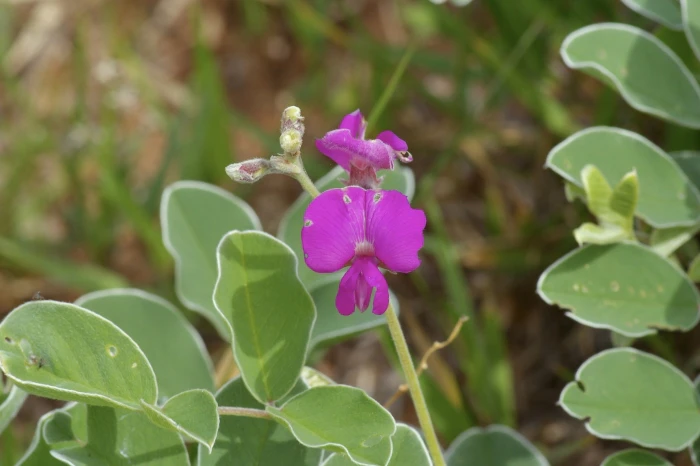Lindheimer’s Hoarypea
(Tephrosia lindheimeri)
Lindheimer’s Hoarypea (Tephrosia lindheimeri)
/
/

Michelle W.
CC BY 4.0
Image By:
Michelle W.
Recorded By:
Copyright:
CC BY 4.0
Copyright Notice:
Photo by: Michelle W. | License Type: CC BY 4.0 | License URL: http://creativecommons.org/licenses/by/4.0/ | Rights Holder: Michelle W. | Publisher: iNaturalist | Date Created: 2023-04-14T12:19:13-07:00 |

























Estimated Native Range
Climate Requirements for Florence, South Carolina
| This Plant | Your Site | Plant Suitability for Your Location | ||
|---|---|---|---|---|
| • Precipitation | 19" - 60" | 46" | Aquatic | Aquatic |
| • High Temp. | 92°F - 100°F | 92°F | OK, but your summers are milder than normal for this plant | OK |
| • Low Temp. | 31°F - 62°F | 33°F | Your winter temperatures are normal for this plant | Excellent |
This plant may not grow well at your location - your precipitation is too high.
Summary
Tephrosia lindheimeri, commonly known as Lindheimer’s Hoarypea, Goat’s Rue, or Lindheimer’s Goat-rue, is a perennial herb native to the South Central United States and Northern Mexico. It is typically found in prairies, plains, meadows, pastures, and savannahs, where it contributes to the biodiversity of these grassland ecosystems. This moderately growing plant reaches a height of 1-3 feet (0.3-0.9 meters) and a width of 1-2 feet (0.3-0.6 meters). It has compound leaves with a soft, hairy texture, and during the summer, it produces showy pink to purple flowers that are attractive to pollinators.
Lindheimer’s Hoarypea is valued for its drought tolerance and ability to thrive in less fertile soils, making it a suitable choice for xeriscaping and naturalistic plantings. It is often used in wildflower gardens, as a border plant, or for habitat restoration projects. It prefers part shade but can tolerate full sun in cooler climates. The plant requires low water once established and grows best in well-draining clay or loam soils. While generally low-maintenance, it can be susceptible to root rot if overwatered or planted in poorly draining soils.CC BY-SA 4.0
Lindheimer’s Hoarypea is valued for its drought tolerance and ability to thrive in less fertile soils, making it a suitable choice for xeriscaping and naturalistic plantings. It is often used in wildflower gardens, as a border plant, or for habitat restoration projects. It prefers part shade but can tolerate full sun in cooler climates. The plant requires low water once established and grows best in well-draining clay or loam soils. While generally low-maintenance, it can be susceptible to root rot if overwatered or planted in poorly draining soils.CC BY-SA 4.0
Plant Description
- Plant Type: Shrub, Herb
- Height: 1-3 feet
- Width: 1-2 feet
- Growth Rate: Moderate
- Flower Color: Purple, Red
- Flowering Season: Spring, Summer, Fall
- Leaf Retention: Deciduous
Growth Requirements
- Sun: Part Shade
- Water: Low
- Drainage: Fast, Medium
Common Uses
Butterfly Garden, Deer Resistant, Drought Tolerant, Low Maintenance, Showy Flowers
Natural Habitat
Prairies, plains, meadows, pastures, and savannahs
Other Names
Common Names: Goat’s Rue, Lindheimer’s Goat-rue
Scientific Names: Tephrosia lindheimeri, Cracca lindheimeri
GBIF Accepted Name: Tephrosia lindheimeri